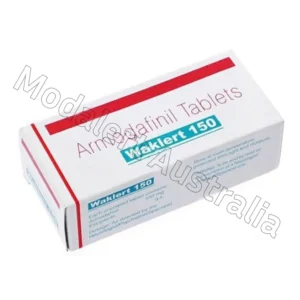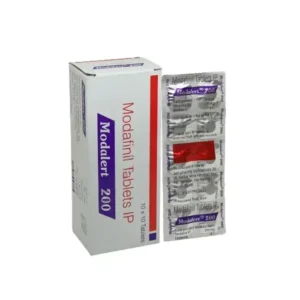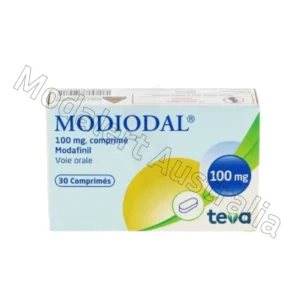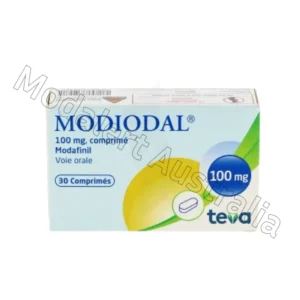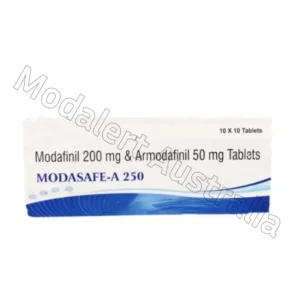Armodafinil VS Modafinil (Provigil vs Nuvigil)
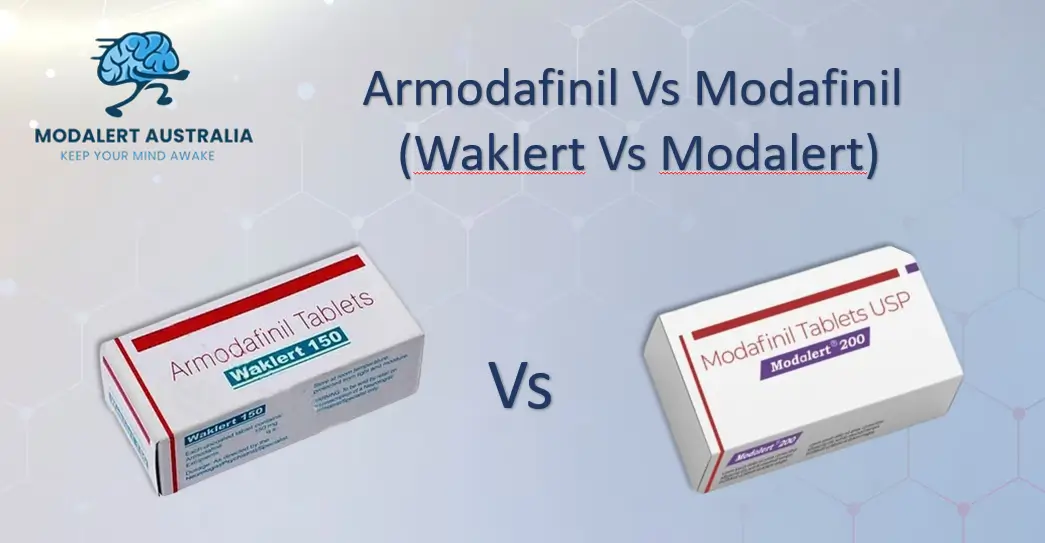
Introduction
Armodafinil vs Modafinil – In the world of cognitive enhancement and wakefulness-promoting agents, Modafinil (Provigil) and Armodafinil (Nuvigil) stand out as two of the most effective and popular options. They are both prescription medicines mainly used for treating sleep disorders such as narcolepsy, shift work-sleep disorder (SWSD) as well as OSA, or obstructive sleep disorder (OSA). They are extensively used for non-pharmacological purposes to improve concentration, productivity, and mental efficiency, earning them the “smart drug.”
Modafinil (Provigil), as well as Armodafinil (Nuvigil), are utilized to treat sleep-related disorders like narcolepsy, sleep apnea, and shift work. They can help you stay awake, but they’re not the same. A few users recommend or one over the other. Others notice no difference.
What is the distinction between the two? Which is more durable? Which one lasts longer? Which is the best for you?
What Are Modafinil and Armodafinil?
Modafinil (Provigil)
- The drug was first developed in France during the 1970s and recognized by the FDA in 1998.
- It was initially developed to treat narcolepsy. Later, it was accepted for treating shift work disorder and sleep apnea.
- It is known for its ability to promote wakefulness, but without the jitteriness that is typical of stimulants such as amphetamines.
- Oft, off-label use is used by professionals, students, as well as biohackers to enhance cognitive performance.
Armodafinil (Nuvigil)
- Modified version of Modafinil, which was first introduced in 2007.
- It is the only R-enantiomer that contains Modafinil (more about this in the future).
- It is thought to be more potent and last longer than Modafinil.
- Approved under the same conditions; however, it could have a smoother and more lasting impact.
Chemical Structure: Enantiomers Explained
The main differentiator, the most significant difference between Modafinil and Armodafinil, is in their chemical structures.
Modafinil is considered to be a racemic mix. That is, it consists of two different enantiomers (mirror-image molecules):
- R-Modafinil (active, longer-lasting)
- S-Modafinil (less active, shorter duration)
The Armodafinil drug is only an R-enantiomer. It is, therefore, more effective per milligram as well as longer-lasting.
Why Does This Matter?
- Because Armodafinil can be described as pure R-Modafinil, it provides a longer-lasting and consistent effect.
- Modafinil’s S enantiomer is processed faster, resulting in a shorter duration of peak effects.
Mechanism of Action: How Do They Work?
Both medications work by altering dopamine, norepinephrine, orexin, and histamine systems in the brain. This results in a state of alertness and wakefulness.
Key Mechanisms:
- Dopamine Reuptake Inhibition – Enhances dopamine levels, improving your ability to focus and motivate yourself.
- Histamine Activation – Enhances awakeness (similar to caffeine, however, with no crash).
- Orexin Stimulation – A neuropeptide that regulates wakefulness and arousal.
Does Armodafinil Work Differently?
- Because it’s the only R-enantiomer, it has an impact that focuses more on dopamine.
- Some users report less jitteriness and smoother descent compared to Modafinil.
Dosage Comparison: Modafinil vs. Armodafinil
| Aspect | Modafinil (Provigil) | Armodafinil (Nuvigil) |
| Standard Dose | 100–200 mg | 50–150 mg |
| Starts working | 30 – 60 min. | 60 – 90 min. |
| Peak Effects | 2–4 hours | 3–5 hours |
| Duration | 8–12 hours | 10–15 hours |
| Half-Life | ~12–15 hours | ~15 hours (R-enantiomer lasts longer) |
Key Takeaways:
- Armodafinil is more potent – 150 mg of Armodafinil ≈ 250 mg of Modafinil.
- Armodafinil is more effective and lasts longer – It’s ideal for those who require continuous concentration (e.g., working long shifts).
- Modafinil could kick in more quickly – It is recommended for patients looking for a speedier start.
Dosage: Is One Stronger Than the Other?
- 150 mg of Armodafinil, approximately equivalent to 200 mg modafinil.
- Certain users feel Armodafinil is more powerful; however, not all users do.
Side Effects: Is One Safer Than the Other?
Both medicines can be tolerated. However, side effects may occur.
Common Side Effects:
- Headaches
- Nausea
- Insomnia (if taken too late)
- Dry mouth
- Anxiety (rare, but possible at high doses)
Armodafinil vs. Modafinil Side Effects:
- Some users report fewer adverse negative effects from Armodafinil because of its smoother release.
- Modafinil can cause a more noticeable peak and crash in certain people.
Serious (But Rare) Risks:
- The skin reactions (Stevens-Johnson Syndrome – extremely rare)
- Dependence (low risk when compared with amphetamines)
- Heart problems (if there are pre-existing health issues)
Cost and Availability: Which Is Cheaper?
| Factor | Modafinil | Armodafinil |
| Brand Name | Provigil | Nuvigil |
| Generic Cost | 30–30–100/month | 50–50–150/month |
| Insurance Coverage | Often covered | Sometimes covered |
| Online Availability | Widely available | Slightly harder to find |
Key Points:
- Modafinil is generally less expensive (more generic choices are readily offered).
- Armodafinil isn’t easy to locate in certain countries.
- They are both prescription-only, However, there are pharmacies online that sell the products internationally.
User Reviews: What Do People Say?
Modafinil (Provigil) Reviews:
Pros:
- Rapider onset
- Additional “kick” to get a heightened concentration
- Excellent for student use and shorter-term projects
Cons:
- It can cause a midday crash
- Some people may be a little anxious about certain
Armodafinil (Nuvigil) Reviews:
Pros:
- Longer-lasting, smoother results
- Ideal for all-day efficiency
- There is less jitteriness
Cons:
- The process takes a longer time to begin
- Might be too strong for people who are taking 150 mg
Modafinil users say:
- ” It’s fast-working but fades by the evening.”
- “Sometimes I feel a little nervous in the initial hour.”
- “Better for short-term focus.”
Armodafinil users say:
- ” All day, but I can’t endure it until noon, or else I’ll be exhausted.”
- “Feels cleaner, no crash.”
- ” It’s too long-lasting if I don’t need to be alert for 15 hours.”
Certain people are more responsive to either one of the two, but there’s no one universal “best” selection.
Which One Should You Choose?
Choose Modafinil If You:
✔ You want a more rapid start time (e.g., to increase morning productivity).
✔You may prefer a milder, more subtle effect.
✔You may need a less expensive alternative.
Choose Armodafinil If You:
✔ Need longer-lasting effects (e.g., for night shifts).
✔You looking for a more smooth, regular experience.
✔If you’re willing to pay a little more.
Final Verdict:
- Modafinil = Quick, sharp, affordable.
- Armodafinil = Sustained, smooth, potent.
Off-Label Uses: More than Just Sleep Disorders
The doctors prescribe them for insomnia. However, many utilize them for:
- ADHD (some believe it aids concentration; However, it’s not approved by the FDA for this).
- Depression (a small number of studies indicate that it can help when used in conjunction in conjunction with an antidepressant).
- Enhancing cognitive function (students, programmers, and biohackers use them to concentrate).
Armodafinil may be better suited for prolonged study sessions; however, Modafinil may be suited to boost productivity for brief periods.
How to Decide Which One to Try
Pick Modafinil If:
- You need quick effects.
- It is not advisable to take a medication that lasts for too long.
- If you’re allergic to medication, you prefer the less common approach.
Pick Armodafinil If:
- You work 12-hour shifts.
- You’re looking for something more natural.
- Modafinil is a drug you’ve tried, but it isn’t long before it wears off.
What If Neither Works?
- A few people do not respond well to either.
- Alternatives to caffeine like L-theanine + caffeine or ADHD medications, could be more effective.
Risks and Warnings (Don’t Skip This)
Serious (but rare) side effects:
- Rashes on the skin (in some cases, extreme reactions such as Stevens-Johnson syndrome).
- Heart-related issues (if there is a family history of heart-related issues).
Dependence risk:
It’s not as addictive as amphetamines. However, some individuals develop tolerance.
Legal status:
Both of them are considered controlled substances (Schedule IV within the U.S.).
Always consult a physician before using these.
Frequently Asked Questions (No Fluff Answers)
Can you switch between Modafinil and Armodafinil?
Yes, but begin by taking a smaller dose before you switch.
Which is better for jet lag?
Modafinil (shorter duration means less sleep disruption).
Do they interact with caffeine?
Yes, the caffeine in coffee can cause anxiety and jitters.
Can you take them daily?
Some do, however, tolerance is a factor that can increase. It helps to exercise.
Conclusion
Modafinil (Provigil) and Armodafinil (Nuvigil) are powerful wakefulness-promoting agents with similar mechanisms but slightly different effects.
- Modafinil can be great for short and more focused concentration.
- Armodafinil is more suitable for day-long performance and smoother results.
Your decision depends on your requirements, stimulant tolerance, and financial budget. Make sure to consult with a physician before making use of any drug.

